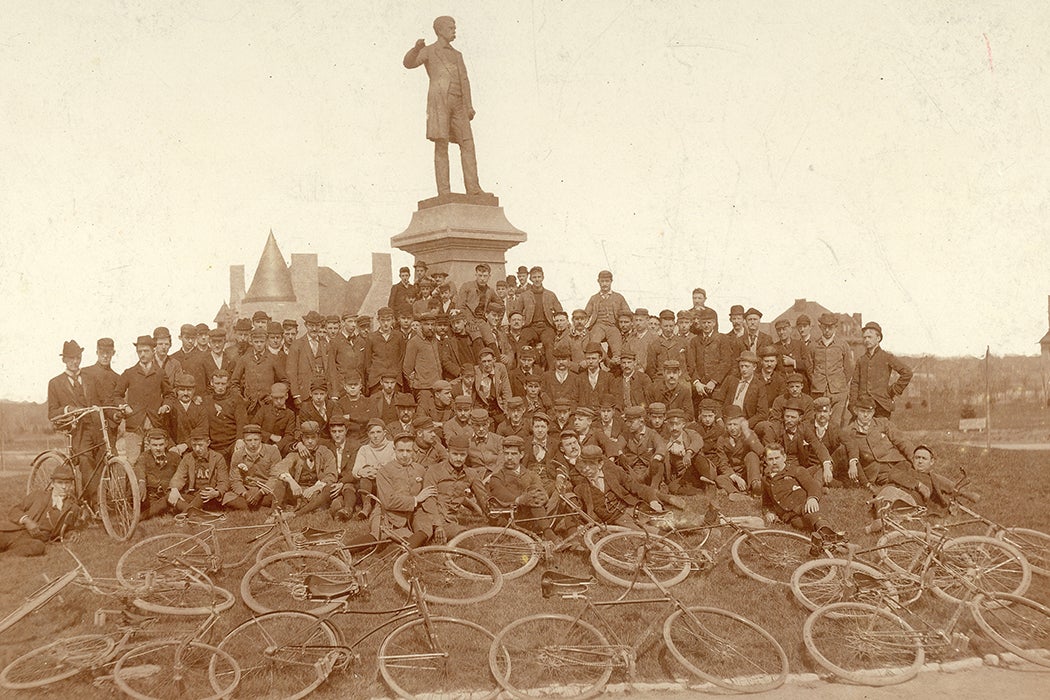Today, a love of bicycles might imply an obsession with exercise or a hipster lifestyle, but back in the day wheels could tell you how someone was likely to vote. Librarian Michael Taylor describes the nineteenth-century “bicycle bloc,” a political faction made up of men on bikes.
During the 1890s, bicycle ridership boomed in the United States. Thanks in part to tweaks in bicycle design, everyone seemed to be falling in love with bikes. Some worried that bicycles constituted a moral peril; most went ahead and coveted a two-wheeled conveyance anyway. But for one group of American men, cycling wasn’t just a fun pastime. Thanks to savvy wrangling by the Republican party, bicycles turned into a political statement.
It made sense for the GOP to appeal to cyclists, Taylor notes. The Democrats had begun a whistle-stop tour the likes of which had never been seen before, and Republican strategists looking to elect William McKinley had to find a way to fight back. The GOP sought ways to address “the vast geographic expanse of the American interior, widespread economic and psychological depression, and not least of all, the Democratic candidate William Jennings Bryan.”
Republicans found a new strategy in an unexpected place. The League of American Wheelmen (LAW), a cycling organization founded in 1880, was originally intended to spread bicycle appreciation. In 1896 it had over 70,000 members. Members pressured politicians for bike-friendly laws, and the nonpartisan group quickly turned into what Taylor calls “a large body of swing voters who were willing to play a game of tit-for-tat.” LAW members were willing to trade their votes for pro-cycling laws, and soon they were being courted by members of both parties.
Want more stories like this one?
William Jennings Bryan, who had upended political tradition by traveling far and wide to campaign, put pressure on the GOP to figure out a new campaign strategy. Their formula hung on a more active McKinley, more Republican literature, and Republican clubs designed to build excitement for the vote. Cyclists, they decided, “would be perfect campaigners,” especially because of the relative novelty of bicycles. They became a coveted audience for Republican strategists.
Taylor tracks the growth of cycling/Republican clubs and estimates that “dozens, perhaps hundreds” sprang up around the country. They held parades, handed out buttons, and gave speeches all over battleground states like Michigan and Ohio. In the meantime, the Republicans began using images of bicycles in their materials, capitalizing further on the craze.
Taylor argues that this consolidated community and kept the focus on local issues. Eventually, McKinley won the election, and within a decade the automobile had stolen bicycles’ focus. But Republican courtship of cyclists is worth remembering as an inspired moment of political advertising and showy sportsmanship.








[…] When Cyclists Made Up an Entire Political Bloc. […]